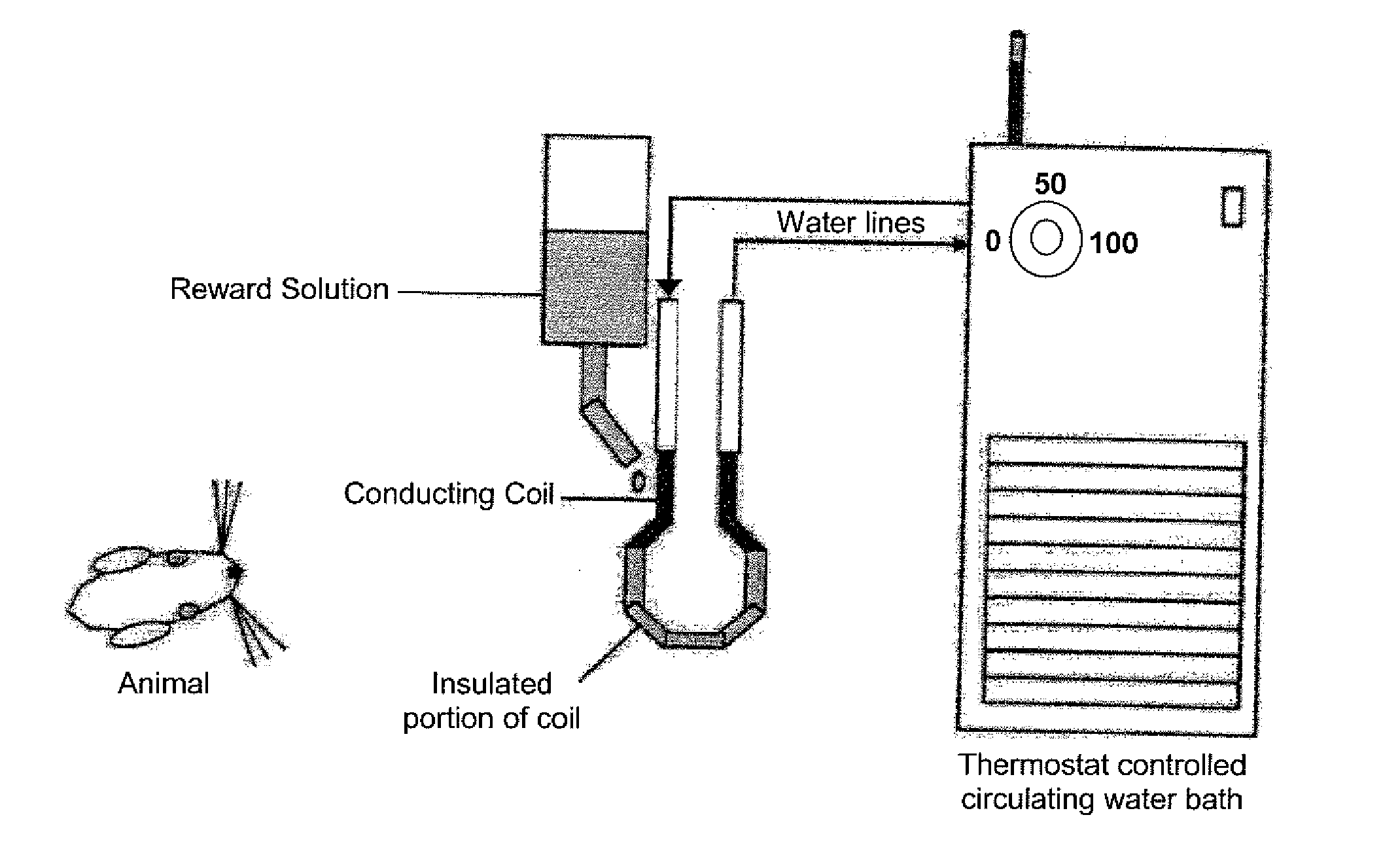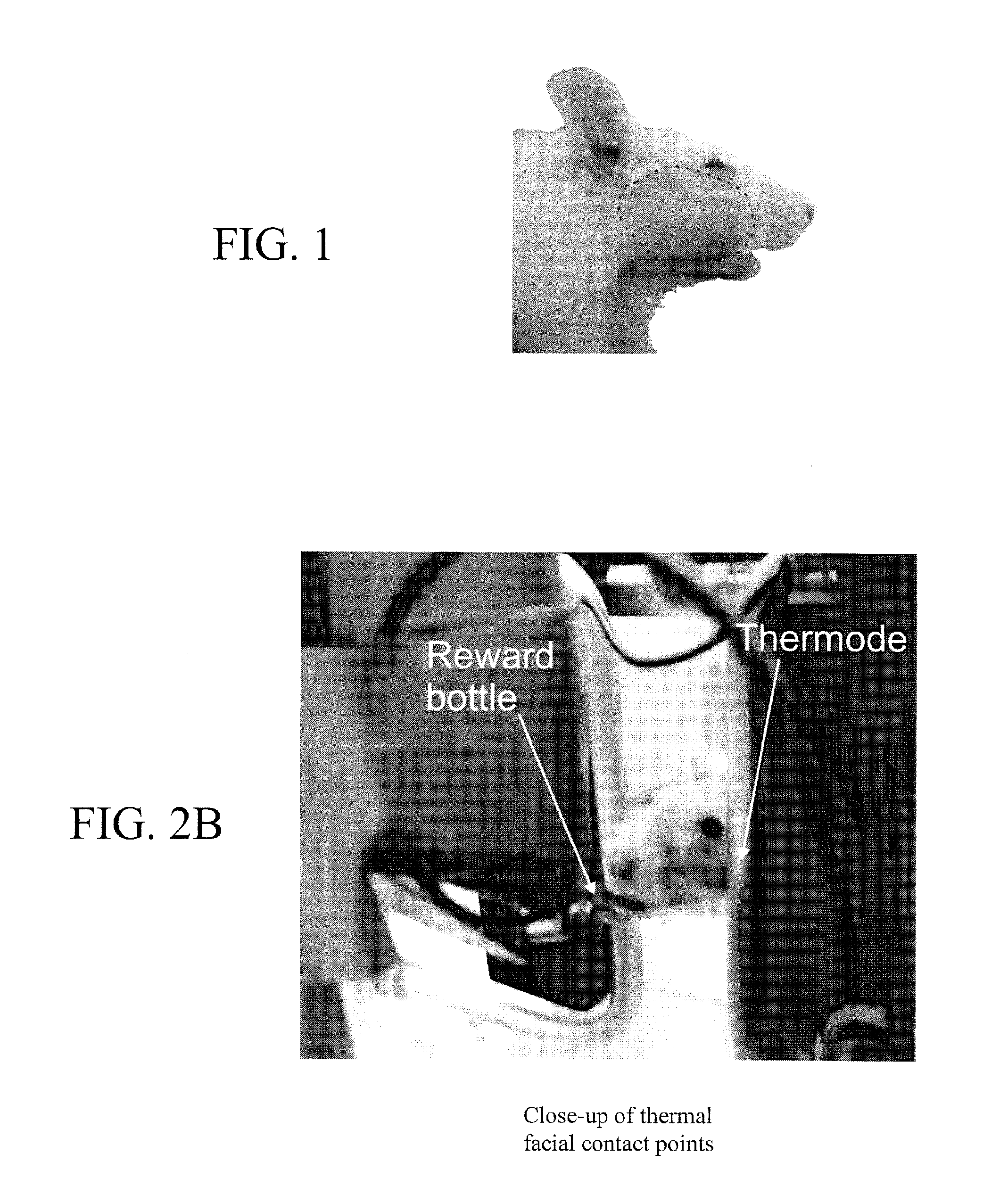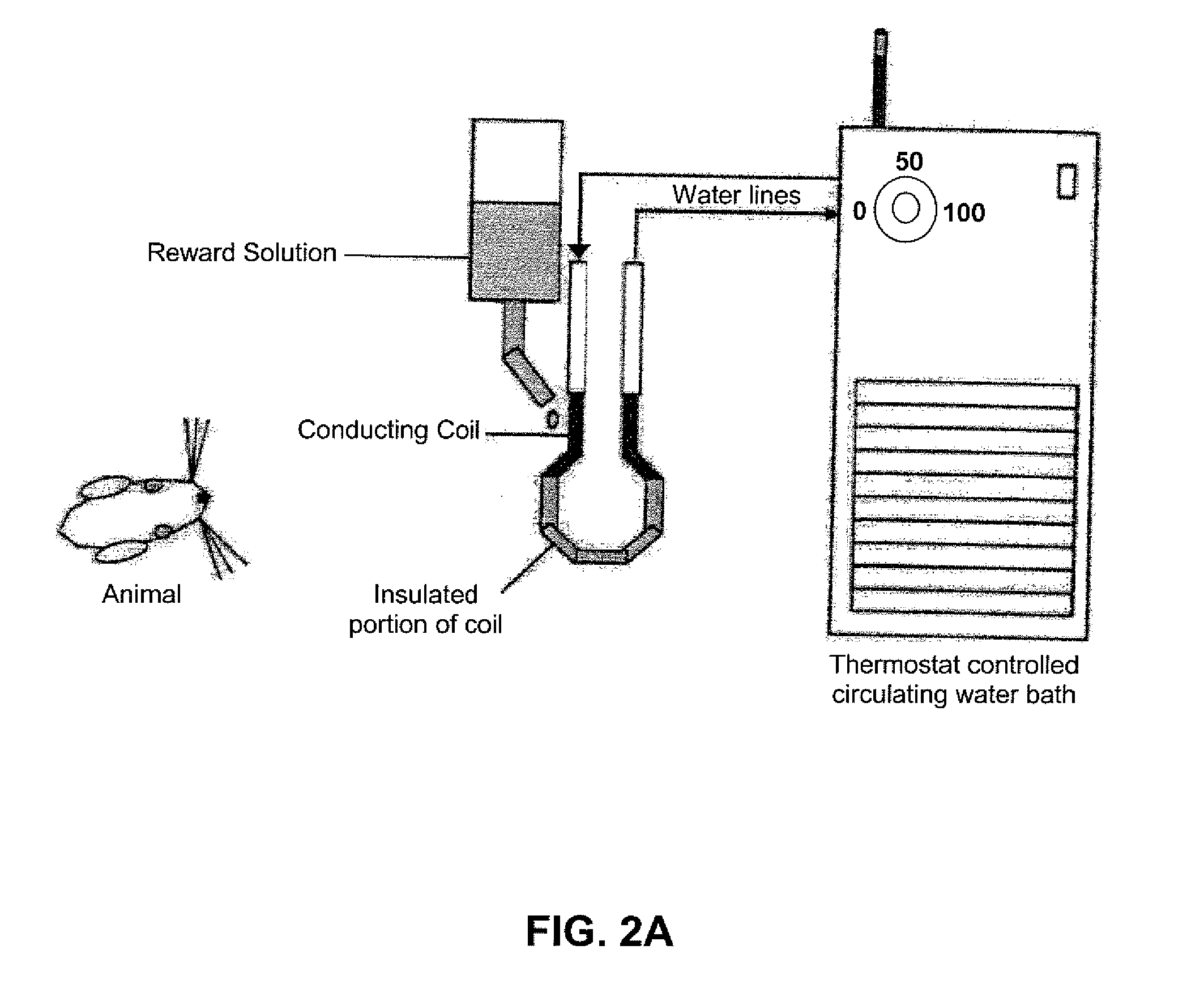Device and method for assessing operant facial pain
a facial pain and operant technology, applied in the field of operant facial pain assessment devices and methods, can solve the problems of difficult elimination of factors, limited assessment of trigeminal nerve-mediated nociceptive responses, and difficult to evaluate orofacial pain in animals, so as to improve the model of human pain experience, the effect of higher processing and higher processing level
- Summary
- Abstract
- Description
- Claims
- Application Information
AI Technical Summary
Benefits of technology
Problems solved by technology
Method used
Image
Examples
example 1
Intake Threshold and Animal Training
[0068]Intake threshold was used to assess whether an animal had learned the operant reward task. In a preliminary experiment, a set of animals (N=10) tested at 24.3° C. had an intake of 10.95±1.21 g. Based on these data, a criterion of >10 g was set to consider an animal as trained. The average intake for the baseline sessions of this study was 11.01±1.10 g. Animal weight was monitored during the course of the study and was not significantly altered beyond normal weight gain.
example 2
Assessment of the Effect of Testing Order
[0069]As seen in FIGS. 4A-4F, there was not an association of the outcome measures with the testing order, as each outcome did not increase or decrease according to the testing sequence. Based on the results of these animals, the outcome measures (intake, licking events, facial contact events and duration, ratio licking / contact events, and ratio facial duration / facial contacts) from the 52.5 and 57.5° C. testing sessions were compared and it was determined that these outcomes were not significantly different (Table 1). Additionally, these temperatures are both above the nociceptive threshold level and are likely activating the same subset of nociceptors. Thus these data were pooled (N=18) for subsequent analyses.
TABLE 1Comparison of the 52.5 and 57.2° C.testing sessions on outcome measuresOutcome measure52.5° C.57.2° C.Sig.Intake8.3 ± 2.95.8 ± 1.70.959Licking contact events1492 ± 546 1290 ± 541 0.798Facial contact events761 ± 212753 ± 3900.50...
example 3
Intake and Facial Contact Duration
[0070]There was a significant effect of temperature on both reward solution intake (FIG. 5A, F=4.87, P<0.005) and total facial contact duration (FIG. 5B, F=16.79, P<0.0001). The highest testing temperatures (≧52.5° C.) produced a significantly lower reward solution intake and shorter total facial contact durations as compared to lower temperatures. Facial contact duration was significantly longer (P<0.05) in the 37.7° C. sessions as compared to the higher temperatures. No animals displayed swelling, blistering, redness or any indicators of tissue damage following any of the sessions.
PUM
 Login to View More
Login to View More Abstract
Description
Claims
Application Information
 Login to View More
Login to View More - R&D
- Intellectual Property
- Life Sciences
- Materials
- Tech Scout
- Unparalleled Data Quality
- Higher Quality Content
- 60% Fewer Hallucinations
Browse by: Latest US Patents, China's latest patents, Technical Efficacy Thesaurus, Application Domain, Technology Topic, Popular Technical Reports.
© 2025 PatSnap. All rights reserved.Legal|Privacy policy|Modern Slavery Act Transparency Statement|Sitemap|About US| Contact US: help@patsnap.com



